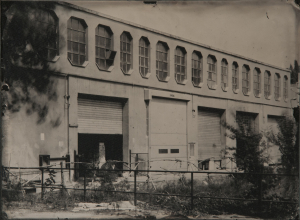Ripensare l’arte in termini di accessibilità. Codificare spazi nuovi di interazione. Ridefinire un perimetro entro il quale la fruizione delle opere abbia più a che fare con l’ emozione di chi guarda piuttosto che con il tecnicismo di chi è addetto ai lavori. Si chiama Basezero il progetto innovativo di questa casa d’aste che offre l’opportunità di acquistare opere d’arte con la formula dell’asta a rialzo partendo sempre da un’offerta libera. Scardinando così gli assetti pre-costituiti di un certo establishment che fa delle gallerie tradizionali e della vendita all’incanto i propri modelli d’elezione. L’innovazione porta il nome tre amici di vecchia data: Stefano Baldo, Francesco Palermo e Alessandro Prada . Tre uomini legati dalla comune passione per l’arte moderna e contemporanea e dal comune intento di mettersi a disposizione dei giovani artisti che troppo spesso non hanno la possibilità di emergere perché frenati dall’imperversare delle lobby.
“Il nostro slogan, l’arte che cresce con te, significa innanzitutto dare una possibilità agli artisti perché possano farsi conoscere dal mercato. Si parla tanto di accessibilità verso chi compera però ci pareva che dalla parte di chi vende, dalla prospettiva dell’artista che si propone, la questione dell’accessibilità non fosse completamente risolta. Di qui il desiderio di intervenire su entrambi i fronti.”
Il 13 dicembre scorso, con uno sforzo notevole in termini organizzativi, specie considerando che gli adempimenti burocratici per la costituzione della società si erano perfezionati solo tre mesi prima, Basezero ha organizzato la prima asta presso lo Spazio Tadini di Milano. Un evento che ha contato la presenza in sala di quasi 300 persone in turn over, a dispetto delle 5 o 6 che normalmente popolano le aste tradizionali. 174 artisti in totale hanno aderito all’iniziativa e 250 sono state le opere raccolte, provenienti da ogni parte d’Italia, qualcuna anche dall’estero.
Volevamo inventare una formula nuova in Italia! Volevamo che andare in asta fosse qualcosa di equiparabile a una bella esperienza. Che significasse passare del tempo divertendosi, facendo un acquisto che potesse poi raccontare una storia.
Il successo di questa iniziativa risiede nella necessaria condivisione di un rischio di impresa. Da una parte il rischio per l’artista di veder aggiudicata, proprio per il meccanismo dell’offerta libera, la propria opera a un prezzo magari inferiore alle proprie aspettative. Dall’altra il rischio di tre imprenditori che decidono di fondare una casa d’aste, far fronte a tutte le spese e sobbarcarsene tutti gli oneri, in un momento storico per altro non dei più felici.
“Noi ci siamo messi in gioco e primi a rischiare siamo stati noi che abbiamo sostenuto tutti i costi. Avevamo deciso, ed è stata una decisione categorica la nostra, di non chiedere nulla all’artista che ci proponeva la sua opera perché ci pareva che esigere per esempio un canone di ingresso non equivalesse a condividere il rischio bensì significasse addossare le spese a qualcun altro. Al di là del risultato d’asta abbiamo comunque garantito una certa visibilità all’artista, tant’è che abbiamo avuto, tra presenze in sala e gente collegata via internet, più di 1000 persone che assistevano all’evento.”
Questo differente approccio al mondo dell’arte ben si concilia con quello che anima Affordable Art Fair, la fiera dell’arte accessibile la cui prossima edizione si terrà a Milano tra il 19 e il 22 marzo 2015. Un diverso codice comunicativo quello di Basezero, decisamente più snello, diretto, libero da oramai obsolete sovrastrutture che ha trovato nel concept di Affordable Art Fair terreno fertile per una concreta collaborazione: la formula dell’asta, e sarà la prima a livello mondiale, all’interno della stessa fiera. Molte sfide per il futuro, per esempio riuscire a instaurare dei rapporti di vera e propria alleanza con le diverse Accademie per garantire la presenza in ogni asta dei più meritevoli tra gli artisti non ancora diplomati. Ricambio generazionale e funzione didattica insieme. Perché se è vero che l’arte cresce con il collezionista è altrettanto vero che cresce con i giovani artisti ai quali viene offerta una opportunità.
“Non intende essere una iniziativa speculativa la nostra, almeno in questa fase. Riversiamo tutta la nostra passione in questo progetto, perché il mondo dell’arte abbia la possibilità di essere rivalutato. Questo è il nostro obiettivo al momento. Ecco, fare i filantropi si potrebbe dire. Pur essendo vivo il desiderio di aprirci anche ad altri settori: la moda, il design, le auto d’epoca, il vintage, insomma il nostro mondo di cose. Ci piacerebbe che Basezero diventasse con il tempo una sorta di portale sulla bellezza accessibile. Qualcosa di ricco e poliedrico.”
Desidero ringraziare per la cortese intervista Stefano Baldo, Francesco Palermo e Alessandro Prada fondatori di Basezero. www.basezero.it
Video di Pasquale Russo
Traduzione di Chris Alborghetti
BASEZERO, ART THAT GROWS UP WITH YOU
Rethink and ponder over art in terms of accessibility. Arrange new interactive spaces. Redefine the way and the perimeter within which the consumption of works of art takes place. Reinterpret the boundaries of art in such a way that works of art themselves are no longer directed at insiders. Consequently their significance should no longer lie exclusively in the way they interpret them and therefore defined by their excessive attention to technical details. Rather, they should be directed at the onlooker and focus on what works arouse in them. It is called Basezero the innovative project run by this auction house. Basically, the ones who set it up give the opportunity to purchase a work of art by making bids. Obviously the work is sold to the highest bidder, nevertheless, there is not a fixed starting amount, in fact, the first bidder places his maximum bid. Nowadays art is displayed officially in galleries and museums where it is the expression of rules and codes that sanction the status of the elite class and set the value of a work of art. Basezero, deconstructs conventional artistic canons and aesthetic values which made of art an instrument of classification. This innovative project is the direct result of three long time friends and bosom buddies Stefano Baldo, Francesco Palermo e Alessandro Prada. Three lads bound together by strong relationships and common interests like that for modern art and contemporary art too. Three men who intend to be at young artists’ disposal, since too often they do not hit the big time because of lobbies which these days rage across the planet.
“Our slogan –art that grows up with you– is first of all a way to give the opportunity to artists to get known in the market. We talk a lot about accessibility for buyers, however who would like these days to be in the seller’s or artist’s shoes? To be in the shoes of somebody who somehow tries to sell works of art, talent and passion in order to get known and to see their hard work paid off in the end. Not many if you know what I mean? We have decided to commit ourselves to working on it, I mean on accessibility on all sides.”
On December 13, 2014, Basezero holds its first auction at Tadini’s Space in Milan (www.spaziotadini.it). To do it, Basezero put in a great deal of effort especially in organizational terms, considering that these guys had completed the bureaucratic compliance for setting up the company only three months before. Nonetheless, in the venue there were nearly three hundred people contrary to what happens in traditional auctions where usually there are just five or six people. One hundred and seventy-four artists partook in the event and two hundred and fifty works from all over Italy and some from abroad were auctioned off.
“We longed to think up and devise a new system in Italy! We wanted people to have a jolly time at the auctions and therefore to give them the opportunity to purchase something that had a story to tell about.”
The success of this event lies within the fact that we were ready to deal with entrepreneurial risk. In this respect, on the one hand the artist, due to the fact that there is not a fixed starting amount, might see his work sold at a lower price than what s/he expects. On the other hand the risk that the three entrepreneurs took when they decided to fund an auction house. In fact, those who can hack it, they have to cope with expenses and obligations in such hard times.
“We took up the challenge and put ourselves to the test considering also the risks involved moneywise as we had to bear all the costs. We decided that we wouldn’t charge any fees at all to the artist for selling his artwork. We thought that charging a fee wasn’t actually what we meant when we talked about sharing risks, rather, it would have been a way to make somebody else face them. Apart from the outcome of the auction, we have anyway guaranteed certain visibility to the artist so much so that if we consider the bidders and those who watched the event online we had more than one thousand people.”
This is a different approach to art and reconciles well the art world and that that enliven the Affordable Art Fair (www.affordableartfair.com/milano). In this respect, the next edition will take place in Milan from the 19th to the 22d March 2015. Basezero introduces a new communication code, definitely more forthright and free from obsolete superstructures. Basezero has found in Art Fair a breeding ground for a tangible close collaboration that is the auction. An event of this sort will be the first in world and will take place within the fair itself. Many challenges for the future, for instance to be able to develop a close rapport and alliance with academies in order to make sure that in each auction there will be the most meritorious artists among the undergraduate. A generational change that performs a didactic function too. In fact, if art grows thanks to collectors, it is also true that it grows thanks to young artists to whom these events, give the opportunity to express their talent.
“The events we hold are not meant to be speculative, at least in this phase. We have a consuming passion for this project also because it will give the art world the opportunity to be re-evaluated. Say that our goal at the moment is to be philanthropists. Although we want to keep our options open to other sectors such as the one of fashion, design, vintage cars and vintage in general, we’d like Basezero to become over time, a sort of accessible versatile and informative beauty portal too.”
I would like to offer my special thanks to Stefano Baldo, Francesco Palermo and Alessandro Prada the founders of Basezero who gave the interview to me. www.basezero.it
Video by Pasquale Russo
Translation by Chris Alborghetti



